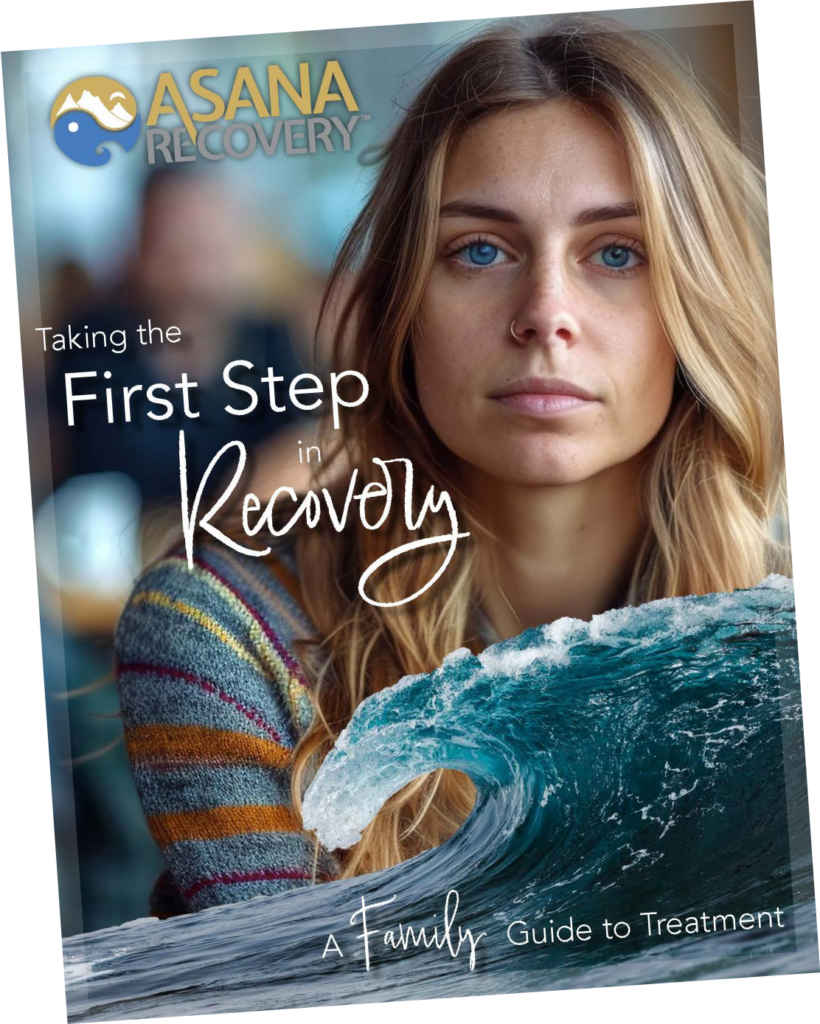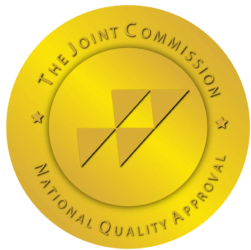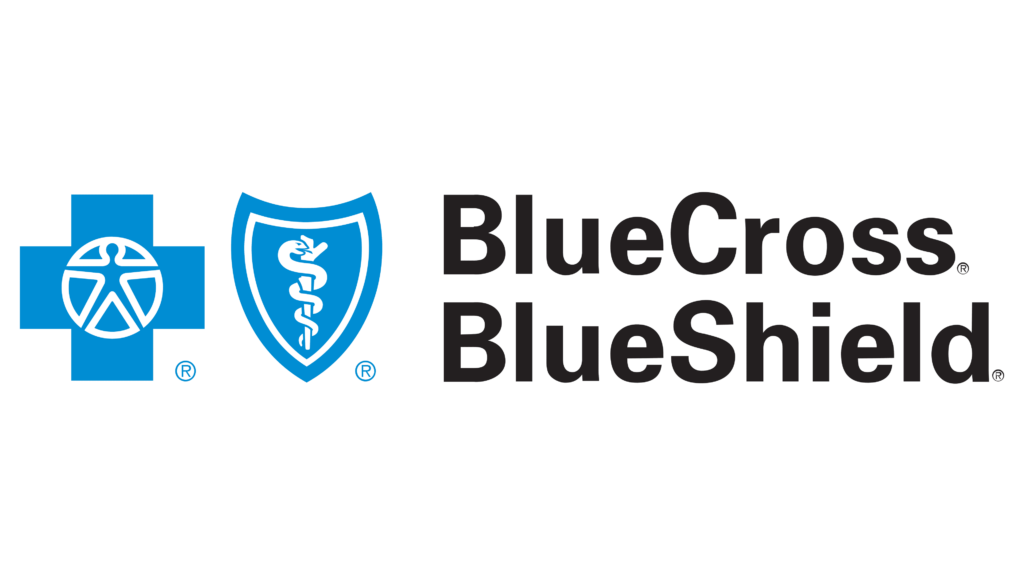FMLA vs. Short-Term Disability: Making the Comparison
Now that we’ve looked at FMLA and Short-Term Disability separately, let’s put them side-by-side to really understand the **FMLA vs. Short-Term Disability** comparison and help you figure out the best path for your **rehab leave options**.
The most important distinction lies in their primary purpose:
* **FMLA = Job Protection:** Its main goal is to secure your job and health benefits while you take necessary medical leave. It is *unpaid* leave mandated by federal law for eligible employees of covered employers.
* **STD = Income Replacement:** Its main goal is to provide you with a portion of your income when you’re temporarily unable to work due to disability. It is an *insurance benefit*, either provided by your employer, purchased privately, or mandated by certain states. It does *not* inherently protect your job.
Here’s a table summarizing the key differences:
| Feature | FMLA | Short-Term Disability (STD) |
|——————|——————————————-|————————————————-|
| **Primary Goal** | Job & benefits protection | Income replacement |
| **Source** | Federal Law | Insurance Policy (Employer, Private, State) |
| **Pay During Leave** | Unpaid | Paid (usually a % of salary) |
| **Job Guarantee**| Yes (up to 12 weeks/year) | No (unless taken concurrently with FMLA) |
| **Eligibility** | Based on employer size, hours worked, tenure | Based on policy enrollment, definition of disability |
| **Duration** | Up to 12 weeks per year | Varies by policy (e.g., 3-6 months) |
| **Availability** | Mandated for eligible employees/employers | Depends on employer benefits or private purchase |
**Can You Use Both FMLA and STD at the Same Time?**
Yes, absolutely! This is often the ideal scenario for taking rehab leave. You can use FMLA to guarantee your job is protected and your health insurance continues, while simultaneously receiving STD benefits to replace some of your lost income. They often run concurrently.
Here’s how it typically works:
1. You determine you need time off for rehab (a qualifying “serious health condition”).
2. You check your eligibility for both FMLA (federal law criteria) and STD (your specific insurance policy).
3. You formally apply for both FMLA leave with your employer and STD benefits through the insurance provider (which might also be managed by your employer’s HR department).
4. If approved for both, your FMLA leave period starts (protecting your job).
5. After the STD policy’s waiting period (e.g., 7 days), your STD payments begin.
6. Your FMLA leave (up to 12 weeks) and your STD benefit payments (duration per policy) run at the same time.
Using both FMLA and STD provides the most comprehensive support: job security *and* financial assistance. This significantly reduces the stress associated with taking time off for essential treatment like
Medication-Assisted Treatment (MAT) or engaging fully in therapies such as
Cognitive Behavioral Therapy (CBT) or
Dialectical Behavior Therapy (DBT) for Addiction.
**Factors to Consider When Choosing:**
When deciding between **FMLA vs. Short-Term Disability**, or how to use them together, consider these personal factors:
1. **Financial Need:** Can you afford to take unpaid leave? If not, securing STD benefits is crucial. Even if you qualify for FMLA, you might delay treatment if you can’t afford to lose income. Understanding your STD policy details becomes paramount. Explore your options;
Private Pay and Payment Options might also be available if insurance coverage is limited.
2. **Job Security Concerns:** Is keeping your specific job your absolute top priority? If so, ensuring you qualify for and properly request FMLA leave is essential. Even if you have STD, without FMLA, your employer might not be legally obligated to hold your position (though many employers will, especially if coordinating with STD).
3. **Eligibility:** Do you meet the requirements for FMLA? Does your employer offer STD, or do you have a private policy? Are you eligible under the terms of that policy? Your eligibility will fundamentally shape your options.
4. **Duration of Treatment:** How long do you anticipate needing treatment? FMLA provides up to 12 weeks of job protection. STD benefits have their own duration limits. Consider the levels of care recommended for you – perhaps starting with
Residential Treatment and stepping down to a
Partial Hospitalization Program or
Intensive Outpatient Program (IOP). Ensure your leave plan aligns with your clinical needs.
5. **Employer Policies and Culture:** How supportive is your workplace? Some employers are very understanding and helpful in navigating leave, while others may be less so. Knowing your company culture and HR department’s approach can influence how you proceed.
Navigating these options can feel complicated. The admissions team at Asana Recovery is experienced in helping individuals understand how FMLA and STD relate to entering treatment. We can provide necessary documentation and answer questions about the treatment side of the equation. Don’t hesitate to
Contact Us for a confidential discussion about your situation. We want to help you find the path that allows you to focus on what matters most: your recovery.
How Asana Recovery Supports Your Rehab Leave
Choosing to enter rehab is a monumental step, and worrying about work shouldn’t add extra stress. At Asana Recovery, we understand the complexities involved when clients need to take leave using FMLA or Short-Term Disability. Our entire approach is designed to support you not just clinically, but also administratively, making the transition into treatment as smooth as possible. We aim to be your partner in recovery, providing top-tier **private care rehab in Orange County** while helping you manage the practicalities of leave.
Our dedicated admissions and case management teams are experienced in working with clients utilizing both FMLA and STD. Here’s how we help:
1. **Providing Necessary Documentation:** Both FMLA and STD require certification from a healthcare provider. Our clinical team provides thorough, timely, and appropriate documentation confirming the medical necessity of treatment for a substance use disorder (a serious health condition). We understand the type of information employers and insurance companies typically need and ensure forms are completed accurately.
2. **Confidentiality and Communication:** We prioritize your privacy. We only share the minimum necessary information required for your leave approval, always respecting confidentiality laws like HIPAA. We can communicate directly with your HR department or STD provider *with your explicit written consent* to streamline the process, answer questions about the level of care, or provide updates on treatment duration if needed.
3. **Treatment Planning Aligned with Leave:** We work with you to develop a personalized treatment plan that considers your approved leave duration. We offer various levels of care, allowing for flexibility. You might start with
Medically-Assisted Detox and
Residential Treatment during the initial, more intensive phase of your leave, potentially transitioning to our
Partial Hospitalization Program (PHP) or
Intensive Outpatient Program (IOP) as you progress and perhaps near the end of your FMLA period or as you plan a return to work.
4. **Insurance Coordination:** Navigating insurance benefits can be confusing. Our team is skilled at working with various insurance providers. We can help you understand your coverage for different **Asana Recovery services** and handle billing coordination. We strongly encourage you to use our confidential
Insurance Verification tool online or call us directly. Knowing your benefits upfront reduces financial uncertainty.
5. **Support for Return-to-Work Planning:** As you approach the end of your treatment and leave period, we assist with discharge planning, which includes strategies for maintaining sobriety upon returning to your daily life and work environment. Our outpatient programs, including
Outpatient Services and even
Virtual IOP, can provide ongoing support as you transition back to work, helping manage stress and prevent relapse.
**Overview of Asana Recovery Services Relevant to Your Leave:**
We offer a continuum of care, allowing treatment to be tailored to your needs and potentially adjusted based on your leave situation:
* **
Medically-Assisted Detox:** Safe, comfortable withdrawal management under medical supervision, often the necessary first step.
* **
Residential Treatment:** Immersive, 24/7 care in a supportive environment, allowing deep focus on recovery foundations.
* **
Partial Hospitalization Program (PHP):** Intensive treatment during the day (several hours, most days of the week) while living at home or in sober living. A good step-down from residential.
* **
Intensive Outpatient Program (IOP):** Less time-intensive than PHP (e.g., 9-15 hours per week), allowing for gradual reintegration into work or family life while maintaining strong therapeutic support. Our **Intensive Outpatient Program (IOP)** is a popular option for those balancing recovery and responsibilities.
* **
Medication-Assisted Treatment (MAT):** Using FDA-approved medications combined with counseling and behavioral therapies to treat substance use disorders, particularly opioid and alcohol addiction. Our **Medication-Assisted Treatment (MAT)** program can be integrated into various levels of care.
* **Therapies:** Evidence-based approaches form the core of our programs, including:
* **
Cognitive Behavioral Therapy (CBT):** Helps identify and change negative thought patterns and behaviors linked to addiction. **Cognitive Behavioral Therapy (CBT)** is fundamental to long-term recovery.
* **
Dialectical Behavior Therapy (DBT) for Addiction:** Focuses on emotional regulation, distress tolerance, mindfulness, and interpersonal effectiveness.
* **Specialized Programs:**
* **
Couples Treatment:** Addressing addiction within the context of a relationship, healing together. Our **Couples therapy for addiction** program helps rebuild trust and communication.
* **
Dual Diagnosis Treatment:** Simultaneously treating addiction and co-occurring mental health conditions like depression, anxiety, or trauma. We also offer specialized
Mental Health Outpatient Treatment.
* **
Pet-Friendly Rehab:** Recognizing the therapeutic benefit of pets, we welcome them in certain programs.
Taking leave for rehab involves coordinating many moving parts. Let Asana Recovery ease the burden. We provide exceptional clinical care and the administrative support needed to utilize your FMLA or STD benefits effectively. If you’re considering treatment and need to arrange leave,
Contact Us today. Let’s discuss your specific situation, verify your insurance, and explore how our **private care rehab in Orange County** can help you embark on a successful recovery journey.
Navigating Legal Rights and Financial Realities
Understanding your legal rights and planning for the financial side of taking leave are critical parts of preparing for rehab. While the primary focus should be on recovery, addressing these practical concerns beforehand can significantly reduce anxiety and allow you to fully engage in treatment. Let’s look at the legal protections offered by FMLA and STD, and how to manage the financial implications.
**Your Legal Rights:**
* **Under FMLA:** If you are eligible for FMLA and follow the proper notification and certification procedures, your employer is legally obligated to:
* Provide up to 12 weeks of unpaid leave per year for qualifying reasons (including rehab).
* Maintain your group health insurance benefits during the leave.
* Restore you to the same or an equivalent job upon your return.
* Employers cannot retaliate against you for taking FMLA leave. They cannot fire you, demote you, or discriminate against you simply because you exercised your right to take leave for a serious health condition.
It’s important to communicate clearly with your HR department and follow their procedures for requesting FMLA leave. Keep copies of all paperwork, including medical certifications provided by your treatment center (like Asana Recovery).
* **Under ADA (Americans with Disabilities Act):** Substance use disorder can be considered a disability under the ADA under certain circumstances, particularly if the individual is in recovery. The ADA prohibits discrimination against qualified individuals with disabilities. This means an employer generally cannot fire someone solely because they are obtaining treatment for addiction. The ADA may also require employers to provide reasonable accommodations, which could potentially include modified work schedules or leave for treatment, although this interacts complexly with FMLA. Importantly, the ADA *does not* protect employees who are currently using illegal drugs. However, it does protect individuals who are no longer using drugs and are participating in or have completed a supervised rehabilitation program.
* **Regarding Short-Term Disability (STD):** Your rights related to STD are primarily determined by the specific terms of the insurance policy (employer-sponsored or private) and any applicable state laws (like California’s State Disability Insurance – SDI). The policy dictates the benefit amount, duration, eligibility, and appeals process. While STD itself doesn’t guarantee job protection, if you are also on FMLA leave, your job protection rights under FMLA still apply. If you believe your STD claim was wrongly denied, you have the right to appeal the decision according to the process outlined in your policy documents.
**Financial Implications and Management:**
Taking time off work, even with STD benefits, often means a reduction in income. Planning for this is essential.
1. **Understand Your Income:**
* **FMLA:** If you’re only taking FMLA leave, your income will be $0 from your job during that period unless you use paid time off (see below).
* **STD:** Find out the exact percentage of your salary the STD policy pays, the maximum weekly benefit, the duration of payments, and whether benefits are taxed. Remember the waiting period before benefits start.
* **Paid Time Off (PTO):** Check your employer’s policy. Many employers require (or allow) you to use accrued paid leave (like vacation days, sick days, or PTO) concurrently with FMLA leave, especially during the STD waiting period. This can help bridge the income gap.
2. **Assess Your Expenses:** Create a budget for the time you’ll be on leave. Identify essential expenses (housing, utilities, food, insurance premiums if applicable) and areas where you might be able to cut back temporarily. Remember that while in residential treatment, some costs like food and lodging are covered.
3. **Explore All Funding Sources:**
* **Insurance:** This is usually the primary funding source for the treatment itself.
Verify insurance for rehab early in the process to understand copays, deductibles, and out-of-pocket maximums. Our team at Asana Recovery can assist you with this crucial step.
* **Savings:** If you have personal savings, determine how much you can allocate towards living expenses during leave.
* **
Private Pay and Payment Options:** If insurance coverage is insufficient or you lack STD benefits, discuss payment plans or financing options with Asana Recovery. We strive to make treatment accessible.
* **State Programs:** Investigate if your state offers disability benefits (like California SDI) that might supplement or replace employer STD.
4. **Communicate with Creditors:** If you anticipate difficulty paying bills (like mortgage, car loan, credit cards) during your leave due to reduced income, contact your creditors *before* you miss payments. Explain your situation; they may offer temporary forbearance or modified payment plans.
5. **Plan for Return-to-Work Costs:** Consider any expenses associated with returning to work, such as transportation or childcare, and factor them into your longer-term budget.
Managing the legal and financial aspects of **rehab leave options** adds another layer to an already challenging situation. But being proactive can make a world of difference. Document everything, understand your policies and rights, and create a realistic financial plan. Remember, investing in your recovery now is an investment in your future health, well-being, and earning potential. Asana Recovery provides high-quality **Asana Recovery services** designed for lasting recovery. If financial concerns are a barrier, please reach out.
Contact Us to discuss your options confidentially.
Real Stories: Choosing the Right Path for Recovery
Sometimes, hearing from others who have walked a similar path can provide the most powerful encouragement. While protecting the privacy of our clients is paramount, we can share anonymized stories that reflect the experiences many have had when navigating leave options like **FMLA vs. Short-Term Disability** to attend treatment at Asana Recovery. These stories highlight how making informed choices about leave, combined with quality treatment, leads to lasting change.
**Sarah’s Story: Balancing Job Security and Financial Need**
Sarah worked as a project manager for a mid-sized tech company in Orange County. Her drinking had escalated over several years, impacting her work performance and relationships. She knew she needed help but was terrified of losing her job and couldn’t afford weeks without pay. Her HR department explained she was eligible for FMLA, guaranteeing her job for 12 weeks. They also offered a Short-Term Disability plan that paid 60% of her salary after a one-week waiting period.
Working with the Asana Recovery admissions team, Sarah was able to coordinate everything. She formally applied for FMLA and STD. We provided the necessary medical documentation confirming the need for
Alcohol Addiction Treatment. Sarah used one week of her saved vacation time to cover the STD waiting period, then her FMLA and STD ran concurrently. Knowing her job was safe (FMLA) and having partial income (STD) allowed her to fully immerse herself in our
Residential Treatment program. She engaged deeply in
Cognitive Behavioral Therapy (CBT) and group sessions. Towards the end of her 10-week leave, she transitioned to our
Intensive Outpatient Program (IOP), which provided support as she returned to work. Sarah often says that understanding her leave options, and knowing Asana Recovery could help manage the paperwork, made treatment possible. “I couldn’t have done it without knowing my job was safe *and* having some income. It let me focus purely on getting well.”
**Mark’s Experience: Utilizing FMLA and State Disability**
Mark worked for a smaller company that didn’t offer STD insurance. He was struggling with opioid addiction after a work injury. He qualified for FMLA, which secured his job, but the lack of pay was a major obstacle. The Asana Recovery team helped him explore other options. Since he lived and worked in California, we guided him to apply for California State Disability Insurance (SDI).
Mark was approved for both FMLA (for job protection) and SDI (for partial income replacement). This combination allowed him to take the necessary time off for
Medically-Assisted Detox followed by residential care incorporating
Medication-Assisted Treatment (MAT). He found immense relief in knowing his position was held under FMLA while SDI provided crucial financial support. Mark successfully completed his initial treatment phases and continued with outpatient support. “Figuring out the leave part felt overwhelming,” Mark shared, “but Asana helped me see I had options even without company STD. Getting that sorted allowed me to commit 100% to the program.”
**Jessica and Tom: Using Leave for Couples Therapy**
Jessica and Tom were both employed at large corporations with robust benefits, including FMLA and STD. Their relationship was strained due to Tom’s struggles with cocaine addiction, and Jessica was experiencing severe anxiety as a result. They decided to seek help together through Asana Recovery’s
Couples Treatment program, alongside Tom entering treatment for
Drug Addiction Treatment.
Tom used FMLA and STD for his intensive treatment period. Jessica also used FMLA intermittently to attend therapy sessions and support Tom, utilizing some sick days and vacation time for pay during those absences. Their employers were supportive, understanding the documentation provided by Asana Recovery. The ability for both to take necessary leave, with Tom having job security and income support, was vital. Our **Couples therapy for addiction** program helped them rebuild trust and develop healthier coping mechanisms together. They highlight how addressing the issue as a unit, facilitated by appropriate leave, strengthened their recovery and relationship.
These stories illustrate that while the path isn’t always easy, understanding and utilizing **rehab leave options** like FMLA and STD makes recovery accessible. Whether it’s securing your job, ensuring financial stability, or coordinating leave for specialized programs like **Dual Diagnosis Treatment** or **Mental Health Outpatient Treatment**, taking the right steps administratively supports your clinical journey.
At Asana Recovery, we see these successes every day. We provide compassionate, effective **Asana Recovery services** in a supportive environment. If you’re worried about taking time off work, let us help you explore your options.
Contact Us for a confidential consultation, and let’s start planning your path to recovery. You can also easily
Verify Insurance online to take the first step.
Taking the Next Step: Choosing Recovery with Support
We’ve explored the important differences and potential overlaps between the Family and Medical Leave Act (FMLA) and Short-Term Disability (STD) insurance. Understanding these **rehab leave options** is a critical first step in making treatment possible without sacrificing your job security or financial stability entirely.
To recap the key takeaways:
* **FMLA** primarily offers *unpaid job protection* and continuation of health benefits for eligible employees needing leave for serious health conditions, including rehab (up to 12 weeks).
* **Short-Term Disability (STD)** primarily offers *partial income replacement* through an insurance policy if you’re unable to work due to a qualifying disability, like needing addiction treatment. It does not inherently protect your job.
* **Using Both:** Often, the best approach is to use FMLA and STD concurrently, securing both job protection and financial support during your recovery journey.
* **Eligibility Matters:** Your ability to use these options depends on meeting specific criteria related to your employer, work history, and insurance policy details.
* **Planning is Key:** Assessing your financial situation, understanding your rights, and communicating clearly with your employer and treatment provider are essential.
Choosing between **FMLA vs. Short-Term Disability**, or figuring out how to combine them, can feel like navigating a maze, especially when you’re already dealing with the stress of addiction. But you don’t have to do it alone.
At Asana Recovery, we are committed to supporting you through this process. We provide comprehensive, evidence-based **Asana Recovery services**, including
Medically-Assisted Detox,
Residential Treatment,
Intensive Outpatient Program (IOP),
Medication-Assisted Treatment (MAT), specialized therapies like
Cognitive Behavioral Therapy (CBT), and programs like
Couples Treatment. Our experienced team can provide the necessary documentation for your leave requests and help coordinate with your insurance.
Making the decision to seek help is the most important choice. Let us help you handle the practicalities so you can focus on healing. We encourage you to reach out for personalized guidance. Our admissions counselors are available 24/7 to answer your questions confidentially and discuss how our **private care rehab in Orange County** can meet your needs.
Take the first step towards a healthier future today.
* **Verify your insurance coverage quickly and confidentially online:**
Insurance Verification
* **Learn more about financing and payment options:**
Private Pay and Payment Options
* **Contact us directly for immediate assistance and answers:**
Contact Us
Recovery is possible, and securing the right leave option is a crucial part of the journey. Let Asana Recovery be your partner in health and healing.
Frequently Asked Questions (FAQs)
What is the difference between FMLA and Short-Term Disability for rehab leave?
The main difference lies in their purpose. FMLA (Family and Medical Leave Act) is a federal law providing eligible employees with up to 12 weeks of *unpaid*, job-protected leave per year for qualifying medical reasons, including rehab. It ensures you keep your job and health benefits. Short-Term Disability (STD) is an *insurance policy* (from your employer, private, or state) that replaces a portion of your *income* if you’re temporarily unable to work due to disability. STD provides financial support but doesn’t guarantee job protection on its own. Often, people use both concurrently: FMLA for job security and STD for income.
How can I determine if I am eligible for FMLA or Short-Term Disability?
To determine FMLA eligibility, you need to check if: 1) Your employer is covered (public agency or private with 50+ employees). 2) You’ve worked for them for at least 12 months. 3) You’ve worked at least 1,250 hours in the past 12 months. 4) Your employer has 50+ employees within 75 miles of your worksite. For Short-Term Disability eligibility, you need to: 1) Check if your employer offers an STD plan, if you have a private policy, or if your state mandates coverage (like California SDI). 2) Review the specific policy documents for enrollment requirements, waiting periods, definition of disability (substance abuse treatment often qualifies), and benefit details. Your HR department or insurance provider can give you specific information.
What services does Asana Recovery offer for individuals on rehab leave?
How can I verify my insurance for rehab at Asana Recovery?
Verifying your insurance coverage for treatment at Asana Recovery is simple and confidential. You can use our secure online
Insurance Verification form on our website. Just provide some basic information about your insurance plan, and our admissions team will check your benefits and contact you to explain your coverage for our services. Alternatively, you can call us directly 24/7 via our
Contact Us page, and one of our admissions specialists will be happy to assist you with verifying your benefits over the phone.
What are the financial implications of taking FMLA or Short-Term Disability for rehab?
The financial implications depend on which leave option(s) you use. FMLA leave is unpaid, meaning you will not receive your regular salary from your employer while on leave unless you use accrued paid time off (vacation/sick days). Short-Term Disability (STD) provides partial income replacement, typically 50-70% of your salary, depending on the policy. This helps offset lost wages but usually doesn’t cover your full income. There might also be a waiting period before STD benefits begin. You’ll need to budget for reduced income and consider costs associated with treatment itself, such as insurance deductibles or copays. Planning ahead, understanding your STD benefits precisely, and potentially using saved PTO are important steps. Asana Recovery can discuss
Private Pay and Payment Options if needed.










